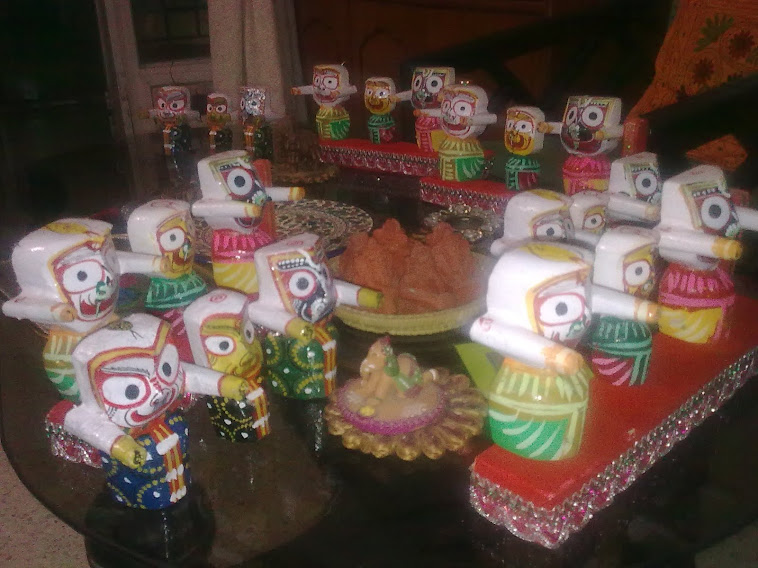 India’s rich legacy of art, architecture, ideas and ideals has been built up over many thousands of years. But today, how many of us pause to appreciate our common cultural inheritance? Our cultural tradition is widely praised in distant foreign lands. It offers humanity a beacon of hope from its dangerous course of rampant greed and aggressive rivalry. Meanwhile, Indians like us focus our energies upon the rat race.
India’s rich legacy of art, architecture, ideas and ideals has been built up over many thousands of years. But today, how many of us pause to appreciate our common cultural inheritance? Our cultural tradition is widely praised in distant foreign lands. It offers humanity a beacon of hope from its dangerous course of rampant greed and aggressive rivalry. Meanwhile, Indians like us focus our energies upon the rat race. We are so immersed in the daily grind of making money and competing with neighbours that we don’t even find time to visit our parents and relatives. Foregoing a weekend at malls and resorts to visit places of historic interest? Browsing through museums to view glorious relics of our cultural heritage? Not for us, thank you!
When we do get around to visiting our ancient monuments, we scratch our names on timeless relics and leave behind trails of plastic and litter. How can our children learn to appreciate our culture and heritage if we ourselves are callous? Does our general apathy and lack of appreciation for our heritage stem from some ingrained deficiencies within us? Or, are we overwhelmed by the vastness of it all?
Perhaps lack of awareness and perception makes us like the proverbial blind men examining an elephant. We are conscious of our heritage only in bits and pieces, and are unable to fully grasp its significance.
India’s cultural legacy is threatened from many quarters. Overpopulation, natural forces, unbalanced town planning and growth, and wanton human greed are major factors in the gradual degradation of historic monuments and spaces of natural diversity and beauty. The writing on the crumbling walls is clear wherever we look.
...
India’s cultural heritage is not restricted to ruined monuments or musty showcases in museums.
It is up to us to see that it continues to be an integral part of our daily lives. Our philosophical traditions can continue to guide us and nurture our spirits in these times of violence and greed. Small shrines and structures connected with local heroes can be a rallying point for community feeling and pride. In historic cities such Jaisalmer or Delhi’s walled city, people continue to live and work within and around heritage buildings. In 2003, the ASI commissioned an Integrated Management Plan for the entire Vijayanagara site.
...
Small but sincere efforts from individuals like us can add up to far-reaching benefits for our heritage. As individual parents or teachers, we can help by introducing young people to our heritage through interesting books, films, and trips to heritage sites. We can take part in heritage walks, and even organise them in our own communities. As professionals, we can facilitate our employers to maintain heritage sites as part of corporate social responsibility initiatives.
Technology has made information-sharing more efficient than ever. We can use it to connect with like-minded people not only in India, but across the globe, and learn more about foreign cultures. Scholars and museum curators are no longer the sole authorities on matters relating to our heritage. We too can participate in spreading knowledge about our heritage, and share our personal insights and perspectives.
Read my detailed piece in Sunday Herald






 Anil was busy jointly selecting and editing the mind-blowing stories in Breaking the Bow, which offer original and highly imaginative alternate takeoffs on the Ramayana. He's also been pegging away on a major work of speculative fiction, aimed at adults this time. It's a complex and subtle story, he says, the speculative elements take a different turn from what we experienced in his first book, The beast With Nine Billion Feet. Will we see a sequel to 'Beast'? Anil smiles enigmatically, keeping us guessing and hoping.
Anil was busy jointly selecting and editing the mind-blowing stories in Breaking the Bow, which offer original and highly imaginative alternate takeoffs on the Ramayana. He's also been pegging away on a major work of speculative fiction, aimed at adults this time. It's a complex and subtle story, he says, the speculative elements take a different turn from what we experienced in his first book, The beast With Nine Billion Feet. Will we see a sequel to 'Beast'? Anil smiles enigmatically, keeping us guessing and hoping.